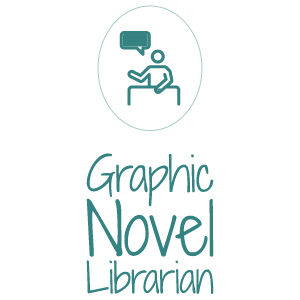*THIS POST IS PART OF A CONTINUING SERIES OF RESPONSES TO SCHOLARLY TEXTS FOR LEARNING WITH DIGITAL STORIES, A MASTER LEVEL COURSE I AM ENROLLED IN AT UC DENVER.
For my digital storytelling class I have begun developing a digital project of my own, I don’t know the final way that I’ll deliver my message but I want an ongoing series where I review graphic novels and make suggestions for viewers based on their hobbies, interests or preferred genres of literature or entertainment. I often have suggestions for my friends and family for graphic novels they should enjoy based off their other preferences and I want to offer that to a larger audience. I do not have a background in the reviews will need to write so I took the opportunity this week to to research some articles about creating book reviews to support my project. I found four particularly helpful pieces that I am going to use to support my crafting of the graphic novel reviews in my series. These articles are:
Each provides text information on the how or the why of reviewing books, by synthesizing these lessons I can create engaging and informative graphic novel reviews. Summarized below are the lessons I took from each article.
How to Write a Book Review
Asenjo’s article is mostly a list of questions to what a reviewer should ponder to support in the development and writing of a review. The questions are organized by the steps of the writing process and aim to keep the review informative and engaging. These questions will be very useful for keeping in mind before, during and after reading my chosen graphic novel and during the prewriting and writing of the review. It was especially good to be reminded to preview the book (something I always tell my students to do but never bother doing my self) and develop opinions about what the title means, what I can learn from introductions or prefaces and how the book is organized. For my reviews this would also include previewing some art work and determining what tone it sets for the narrative.
Book Reviews Hanout
This handout from the University of North Carolina provides some background on what a review is and made a point to highlight that a reviewer’s purpose is to make an argument not just to summarize the author’s points. For the university writing center this means determining if one agrees or disagrees with an author and providing evidence as to why, in my reviews I will argue why my viewers should read a particular graphic novel and then support my claim by connecting the narrative with my viewer’s interests, hobbies or preferred genres.
Tips for Writing Book Reviews
First I want to state that I did not realize, until linking to Luisa Playa’s article above, that it is written for teen writers. Playa’s article, however, is concise and is a useful outline for making sure that a review is covering all bases the intended audience will be expecting. Also I am using this project as a springboard for having students create their own reviews of graphic novels and so it is nice to have manageable reference guide that they can follow and to have created exemplars that follow the same model. Playa’s tips are to start with a brief description of the first half of the book or so, no spoilers! Next share what you liked, anything you disliked and a wrap up with an optional rating.
Writing Book Reviews
This how to guide from the Writing Tutorial Service at Indiana University provided similar tips as the UNC handout but had a great reason for why reviews are useful for the reviewer. In education it is important for students to understand why they are participating in a learning task. So I want to share this quotation with my students and keep it in mind myself when I am writing graphic novel reviews. “Reviewers answer not only the WHAT but the SO WHAT question about a book. Thus, in writing a review, you combine the skills of describing what is on the page, analyzing how the book tried to achieve its purpose, and expressing your own reactions.”
The ideas I found in these four text have given me plenty to think about and use to scaffold my own graphic novel reviews now I have to apply what I have learned to take the next steps in my digital project.
 .
.